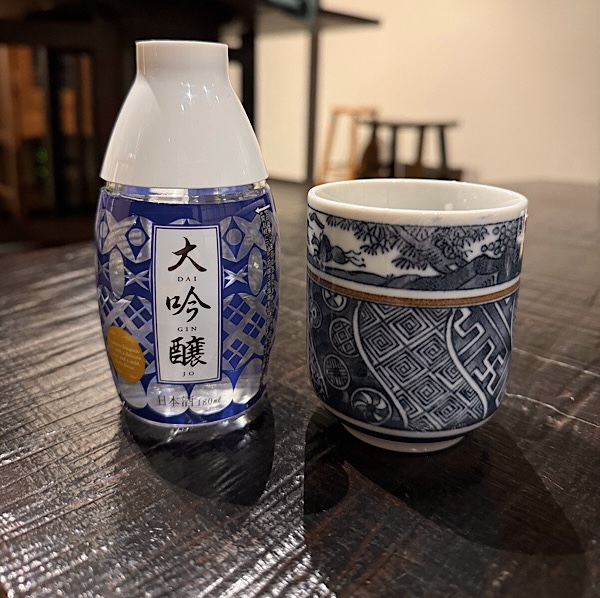Today we left Enraku and were heading for Kanazawa, which meant we had an opportunity en route to stop and check out some saké breweries. A few years ago we had such a great time doing the rounds of some nine saké breweries near Nara (south of Osaka) and found some favourites that we are able to get back home so we thought we’d try that again. First stop was going to be the Masuda Sake Brewery – most famous for the Masuizumi their
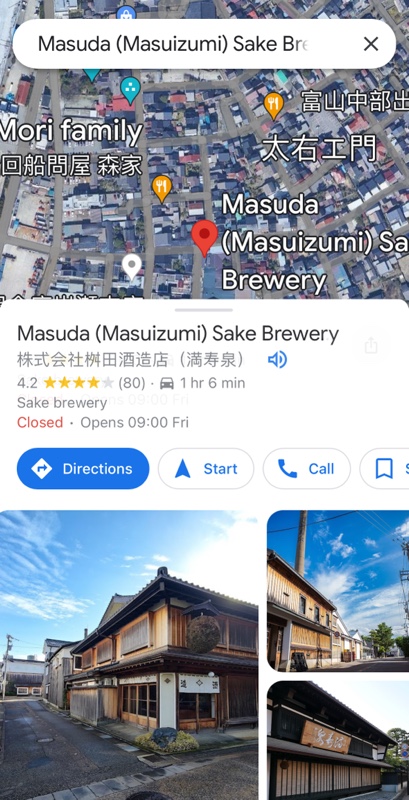 The pics that show up when you search a place are often quite handy so you know what you are looking for…
The pics that show up when you search a place are often quite handy so you know what you are looking for… Anyway, you’d think this wouldn’t be too difficult a task… look up the brewery, find an address, type it into Google maps (and the car’s archaic GPS unit for good measure) and off you go! Oh if wishing made it so! We found the general area okay thanks to the aforementioned navigational devices, and then seemed to be stumbling around a bit lost until I saw this door – and remembered seeing it on the images that popped up on Google Maps. Awesome – we are in the right place. So I asked a guy who obviously worked there, who happened to be passing by, and he directed me slightly down the road to a doorway….
Anyway, you’d think this wouldn’t be too difficult a task… look up the brewery, find an address, type it into Google maps (and the car’s archaic GPS unit for good measure) and off you go! Oh if wishing made it so! We found the general area okay thanks to the aforementioned navigational devices, and then seemed to be stumbling around a bit lost until I saw this door – and remembered seeing it on the images that popped up on Google Maps. Awesome – we are in the right place. So I asked a guy who obviously worked there, who happened to be passing by, and he directed me slightly down the road to a doorway….
Which I duly entered – only to discover it was-someone’s private residence and I was fucking trespassing!!! Jesus titty fucking Christ! The guy was gesturing at this doorway but was trying to tell me to go around the corner and and down the next block?! Between Mr K and his moving violation and me now accidentally trespassing – we won’t be allowed back in Japan! 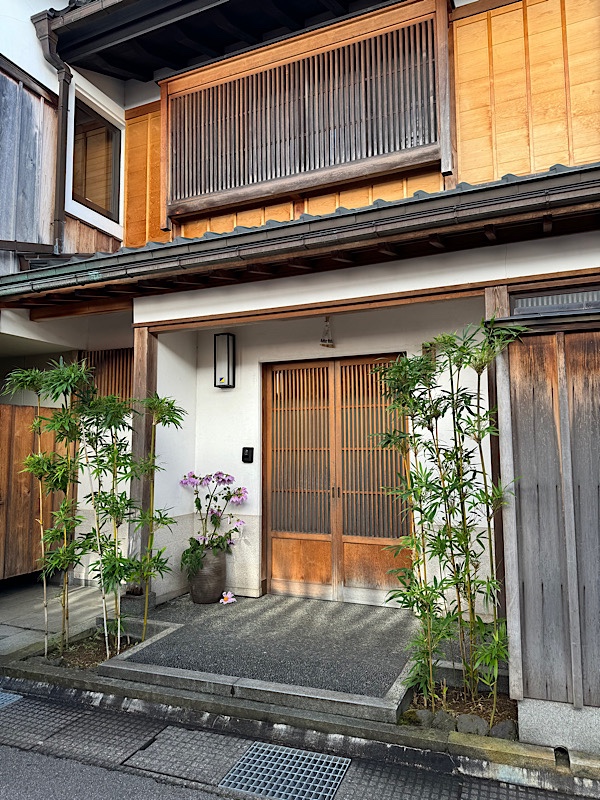 On the corner of the next block – totally not visible at all from where the ‘helpful’ worker was pointing was one of the buildings that I saw on the Google Map.
On the corner of the next block – totally not visible at all from where the ‘helpful’ worker was pointing was one of the buildings that I saw on the Google Map. 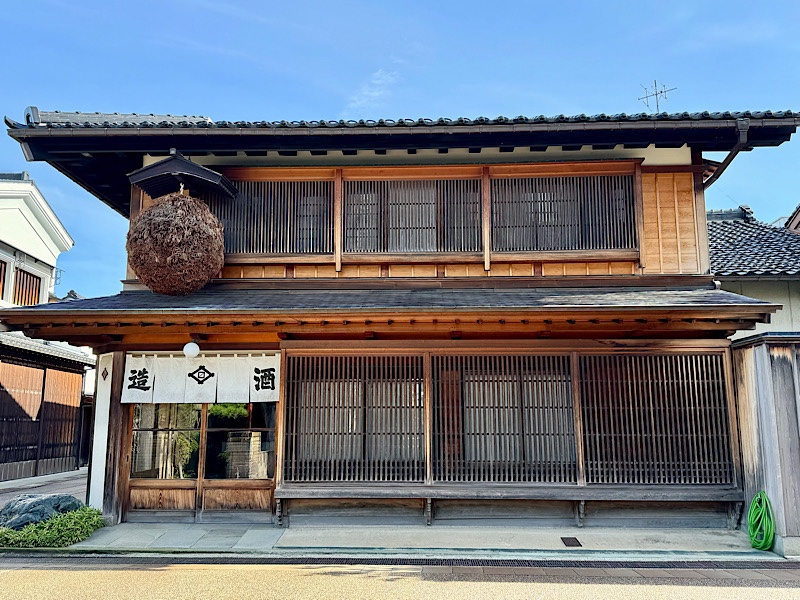
For anyone who is curious – the sugidama is literally a cedar ball hung outside the brewery and it serves as a sort of street sign for saké breweries letting people know when there is fresh saké available. When the brewing season begins, the saké makers collect hundreds of sprigs of soft green cedar and cut them into a sphere. They then hang the cedar ornament of whatever size outside their establishments, usually above their entrance. This is quite a large one.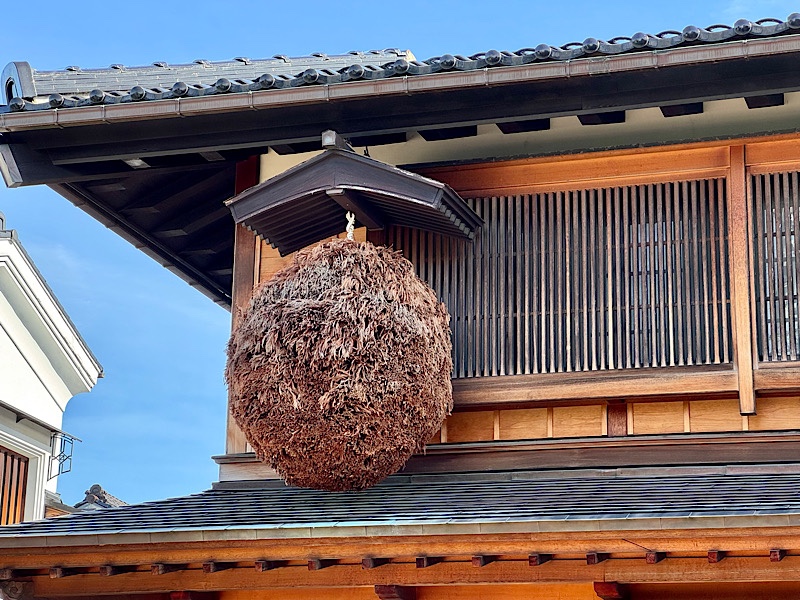 Eventually we ends up at the right spot – which was sporting only a small sugaidama in comparison.
Eventually we ends up at the right spot – which was sporting only a small sugaidama in comparison.  Yes. This is the right place. The Masuda brewery has a long history, as many of them do, which speaks to how the family started their brewing up in Hokkaido and moved south after some disastrous seasons of foul weather. Starting up a brewery in Toyama they wanted to sell their products here in the refined tea houses frequented by the geisha and their clients, so they came up with the name, Masuizumi as the most refined and auspicious version of the Masuda name – from what I was told, it was this name change that helped sell their products in the tea houses. #marketingwins
Yes. This is the right place. The Masuda brewery has a long history, as many of them do, which speaks to how the family started their brewing up in Hokkaido and moved south after some disastrous seasons of foul weather. Starting up a brewery in Toyama they wanted to sell their products here in the refined tea houses frequented by the geisha and their clients, so they came up with the name, Masuizumi as the most refined and auspicious version of the Masuda name – from what I was told, it was this name change that helped sell their products in the tea houses. #marketingwins 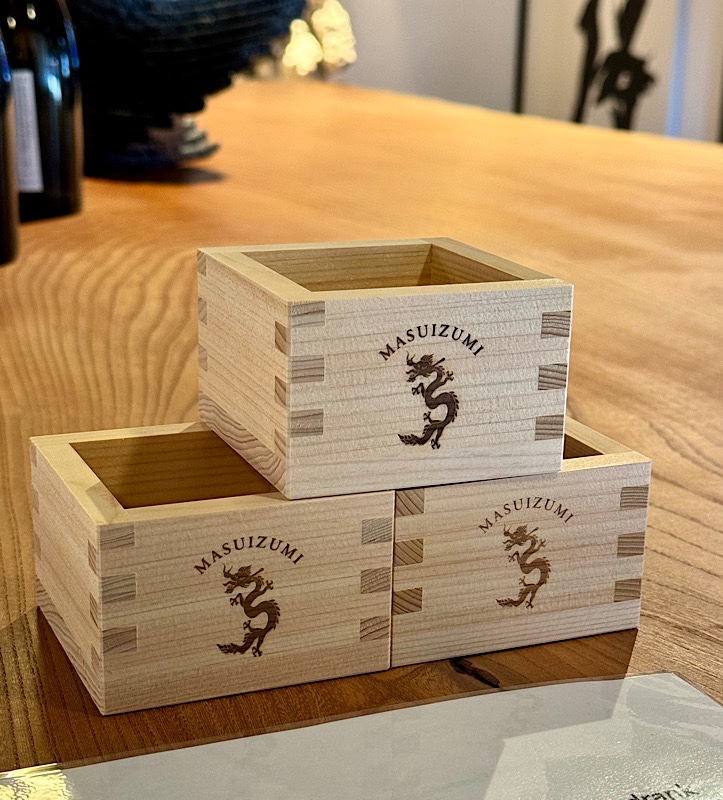 When I entered I was greeted by this explanation of how a saké tasting worked in this particular brewery – and even after I received and English ‘version’ of the ‘instructions’ and a translation from a staff member embellished with enough gesticulation as to almost be interpretive dance… we still coudn’t make head nor hide of it!
When I entered I was greeted by this explanation of how a saké tasting worked in this particular brewery – and even after I received and English ‘version’ of the ‘instructions’ and a translation from a staff member embellished with enough gesticulation as to almost be interpretive dance… we still coudn’t make head nor hide of it!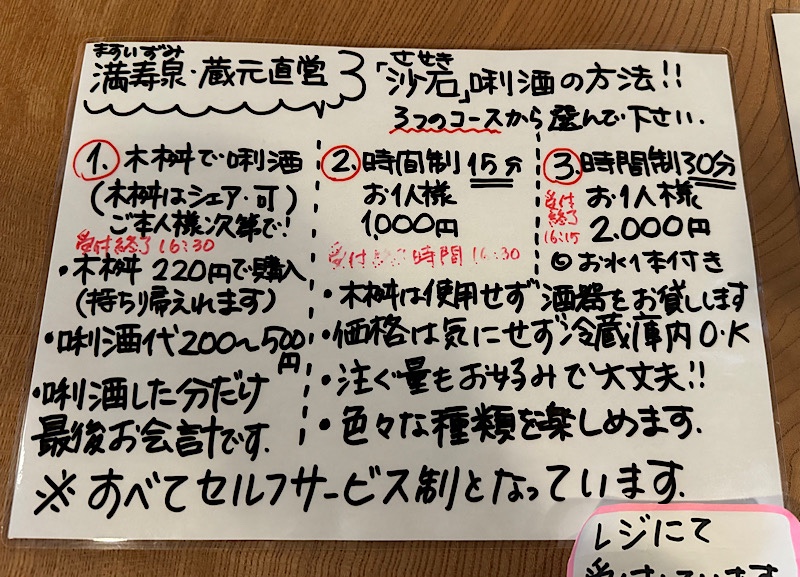
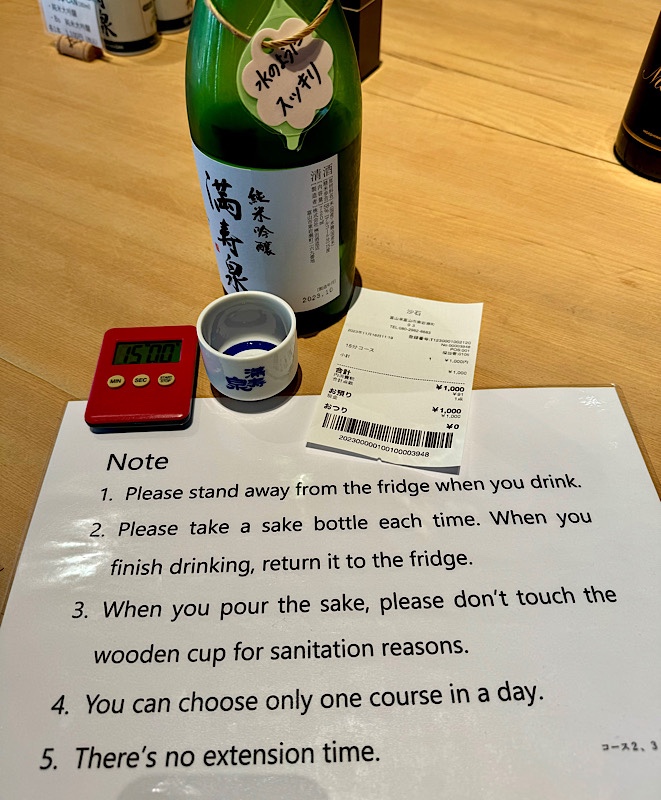
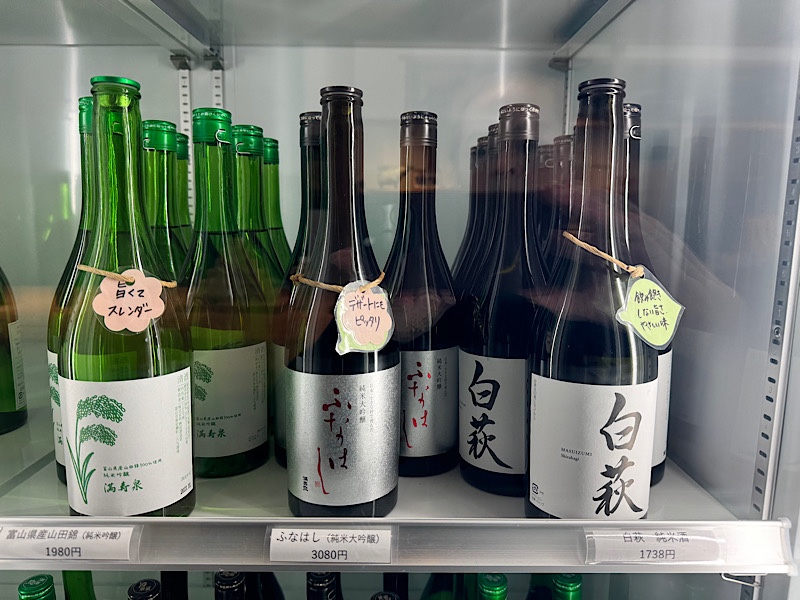 And I can’t read a lick of kanji… when it comes to saké I know that I like ones on the dry end of the scale, not to heavy on the aroma. Definitely nothing sweet or cloying (some are downright syrupy), and I quite dislike saké that feels like it should be labeled ‘vodka’ or tastes of grain spirit. Over time I’ve learned that I like the junmai gingo or junmai daiginjo and I have been to enough breweries and tastings to have some favourites.
And I can’t read a lick of kanji… when it comes to saké I know that I like ones on the dry end of the scale, not to heavy on the aroma. Definitely nothing sweet or cloying (some are downright syrupy), and I quite dislike saké that feels like it should be labeled ‘vodka’ or tastes of grain spirit. Over time I’ve learned that I like the junmai gingo or junmai daiginjo and I have been to enough breweries and tastings to have some favourites.But this? Who can tell one from the other.
 Oh and they had FIVE fridges this size all full of different offerings that you could try. Some of this fridge was full of vintage saké and limited edition runs which is a bit of a bitch because two of the ones I liked in this fridge aren’t even available for sale!
Oh and they had FIVE fridges this size all full of different offerings that you could try. Some of this fridge was full of vintage saké and limited edition runs which is a bit of a bitch because two of the ones I liked in this fridge aren’t even available for sale! 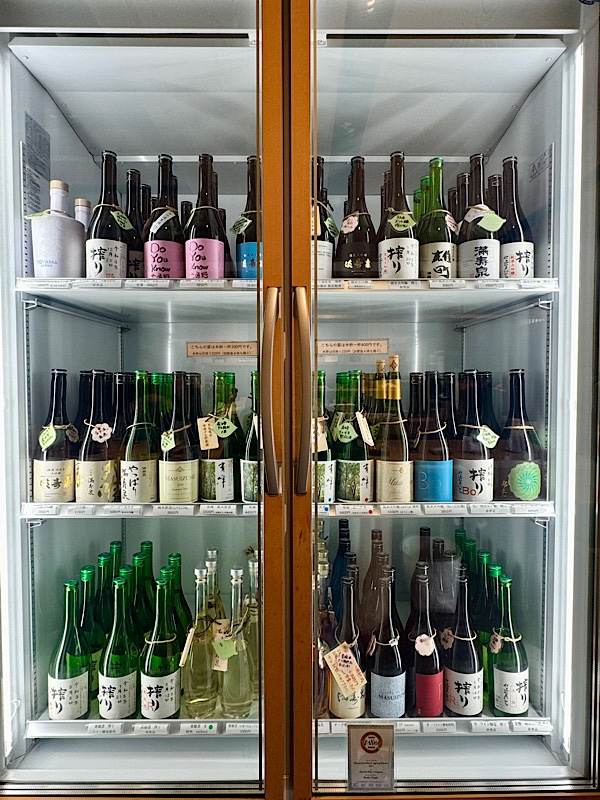 I tried about nine in my 15 minutes and took some photos of some favourites. I gotta say it was a lot of fun… there were a couple of other guests there who were also talking and laughing (in English) about tasting against the clock – they turned out to be Japanese and Croatian but both living and working in Berlin at the moment. We tried to divide and conquer a little but just ended up telling each other which ones to try. 🙂
I tried about nine in my 15 minutes and took some photos of some favourites. I gotta say it was a lot of fun… there were a couple of other guests there who were also talking and laughing (in English) about tasting against the clock – they turned out to be Japanese and Croatian but both living and working in Berlin at the moment. We tried to divide and conquer a little but just ended up telling each other which ones to try. 🙂 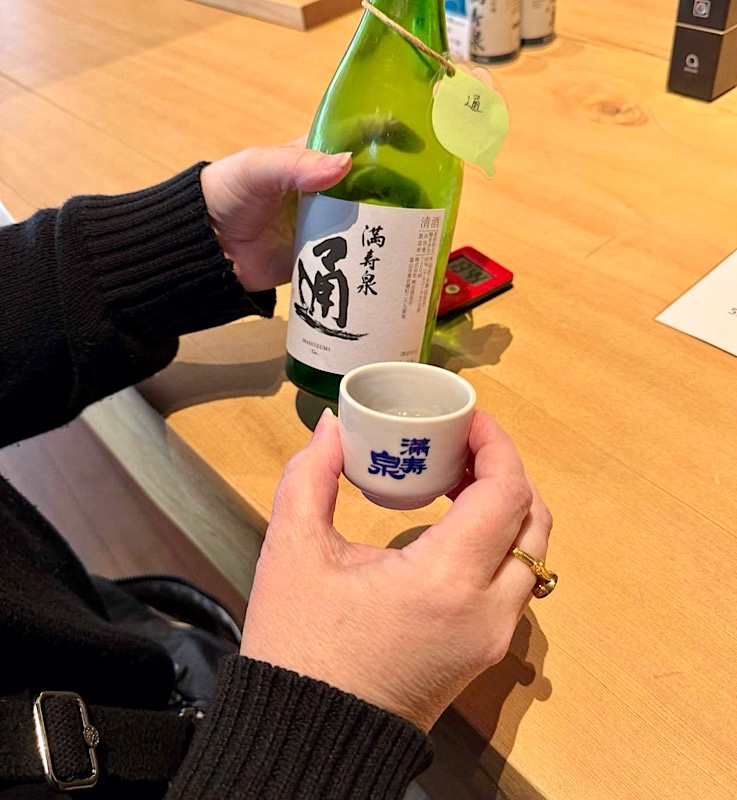 It was good fun – I bought a nice bottle of junmai daiginjo to take away and couple of little cups as a memento. Then we ventured south in search of the next brewery – which was the Yoshino Tomo brewery.
It was good fun – I bought a nice bottle of junmai daiginjo to take away and couple of little cups as a memento. Then we ventured south in search of the next brewery – which was the Yoshino Tomo brewery.  Thankfully a little easier to find. Definitely not as slick an operation as the Masuda brewery and we walked in and were hard pressed to find anyone to show us around or give us any information.
Thankfully a little easier to find. Definitely not as slick an operation as the Masuda brewery and we walked in and were hard pressed to find anyone to show us around or give us any information. 
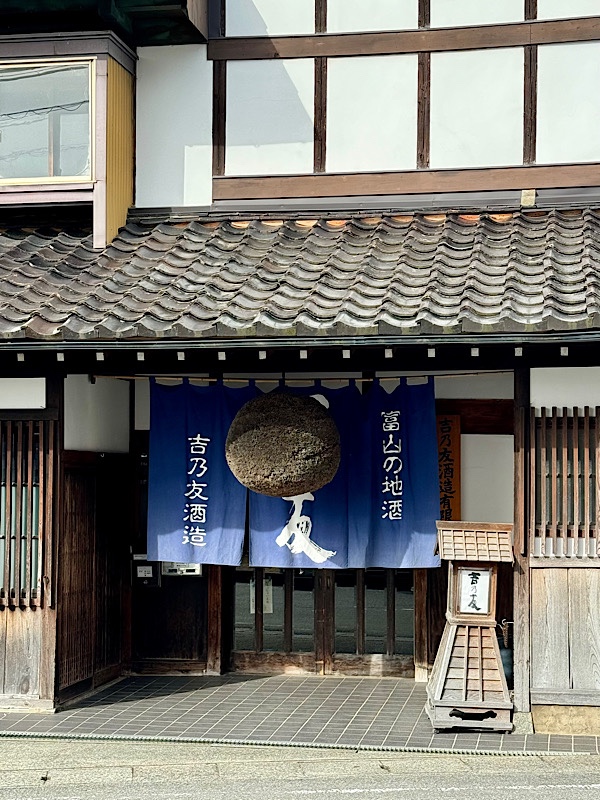 This little tanuki was by the door with a big ‘Welcome’ sign but to be honest it wouldn’t have surprised me if we were trespassing again – the welcoming committee was non-existent and we couldn’t seem to get any help at all.
This little tanuki was by the door with a big ‘Welcome’ sign but to be honest it wouldn’t have surprised me if we were trespassing again – the welcoming committee was non-existent and we couldn’t seem to get any help at all.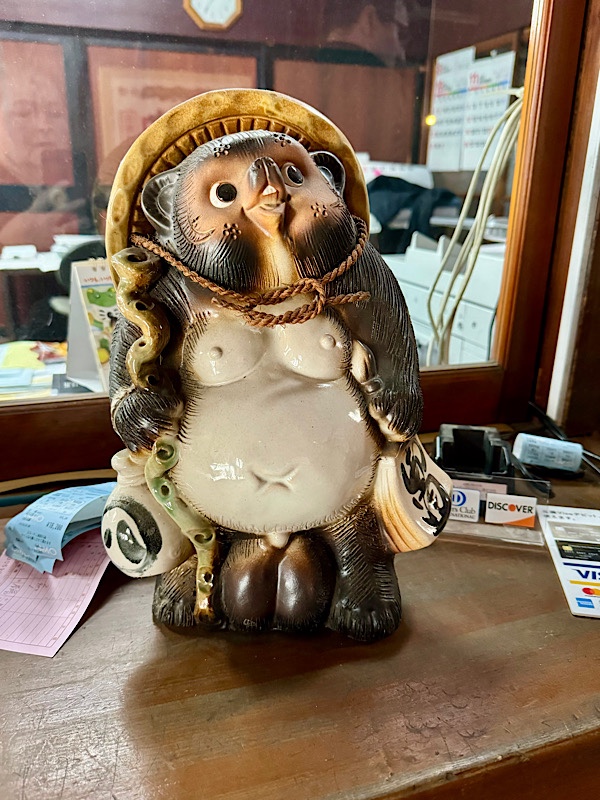
 After poking around for a while and using Google Translate to decipher many many labels, we decided to bail out and took some notes of anything we might like to try down the track from the supermarkets. Seemed easier!
After poking around for a while and using Google Translate to decipher many many labels, we decided to bail out and took some notes of anything we might like to try down the track from the supermarkets. Seemed easier!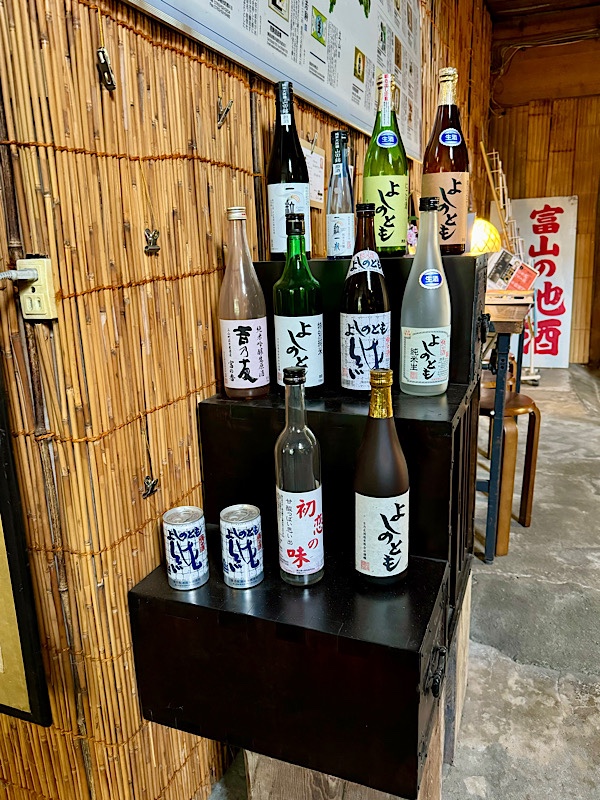
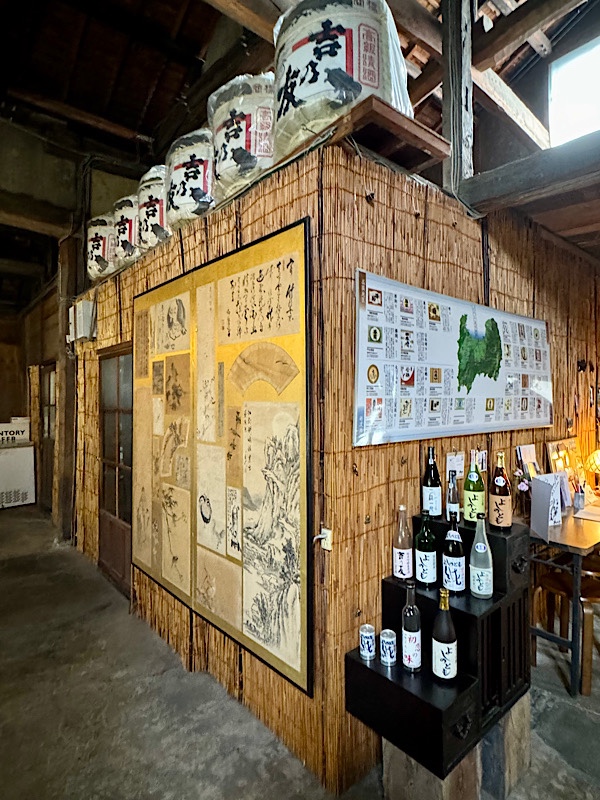
Have to say it would have been easier to do a 15 min speed tasting with only one fridge full of varieties to try and sample! I have seen the Kisaki pink in the shops before so now we have a bit more info, it might be worth giving some of these a try. At least the labels are distinctive so we’ll be able to recognise them easily.
I have seen the Kisaki pink in the shops before so now we have a bit more info, it might be worth giving some of these a try. At least the labels are distinctive so we’ll be able to recognise them easily.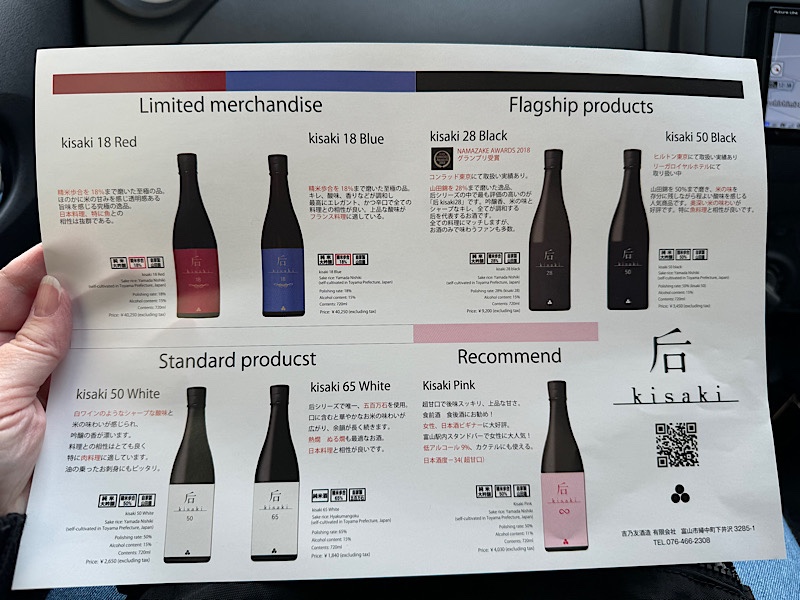 Oh look… there is the Masuizumi Junmain gingo at Lawson’s that I just bought at the last brewery, for JPY400 less than they charged at the tasting room! Oh well, live and learn. 🙂
Oh look… there is the Masuizumi Junmain gingo at Lawson’s that I just bought at the last brewery, for JPY400 less than they charged at the tasting room! Oh well, live and learn. 🙂 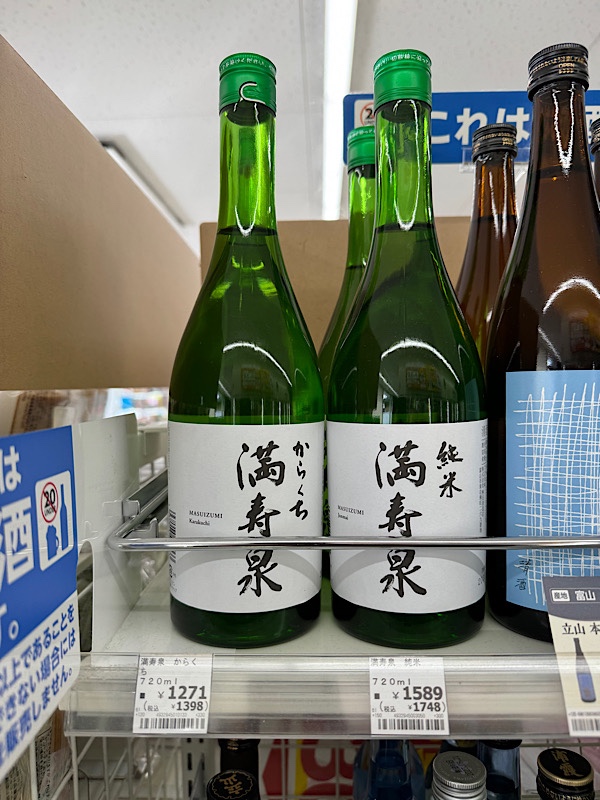 Next stop was a roadside services for lunch – and I have to say, even dodgy roadside food here is better than a lot of the cheap and cheerful Japanese restaurants that we have at home. I’d go so far as to say convenience store sushi is better than most Australian sushi trains restaurants. 😐 Disappointing but there you have it. This katsudon meal with miso soup was roughly AUD$10 – and it was delicious.
Next stop was a roadside services for lunch – and I have to say, even dodgy roadside food here is better than a lot of the cheap and cheerful Japanese restaurants that we have at home. I’d go so far as to say convenience store sushi is better than most Australian sushi trains restaurants. 😐 Disappointing but there you have it. This katsudon meal with miso soup was roughly AUD$10 – and it was delicious.
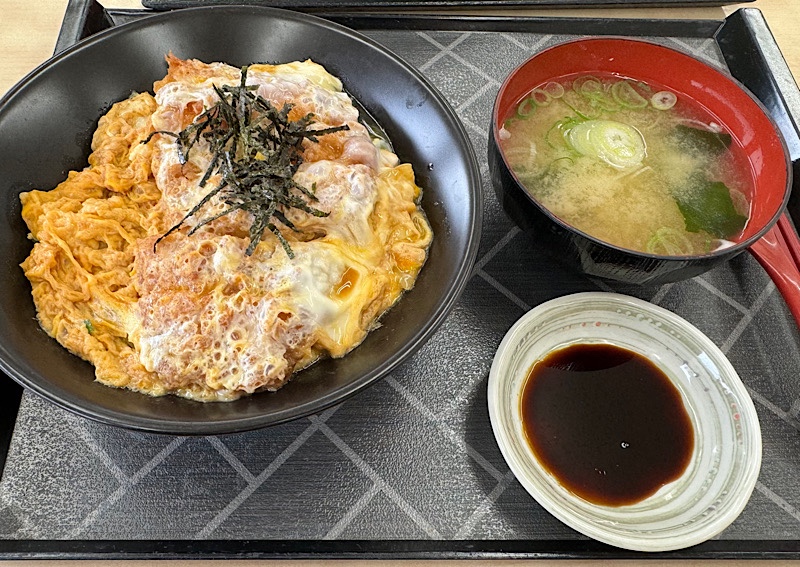
Speaking of roadside rest stops – I saw this in the ladies restroom… a urinal for small boys who might be accompanying their mothers to the bathroom:
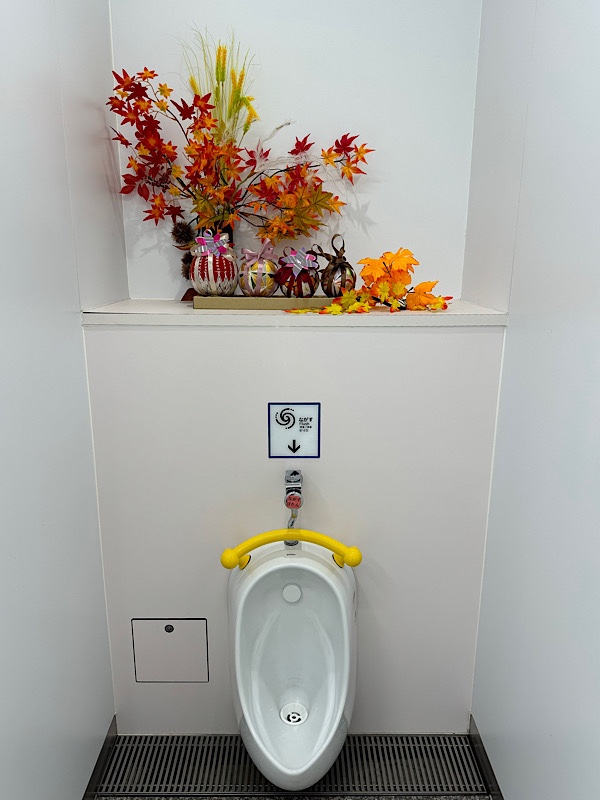
I mean, seriously?! You can just tell someone (who takes pride in their work as a bathroom attendant!) is carefully swapping out the display for each season as well… it’s lovely, I appreciated their efforts… at home, we’re happy if there isn’t pee on the floors at roadside servos.
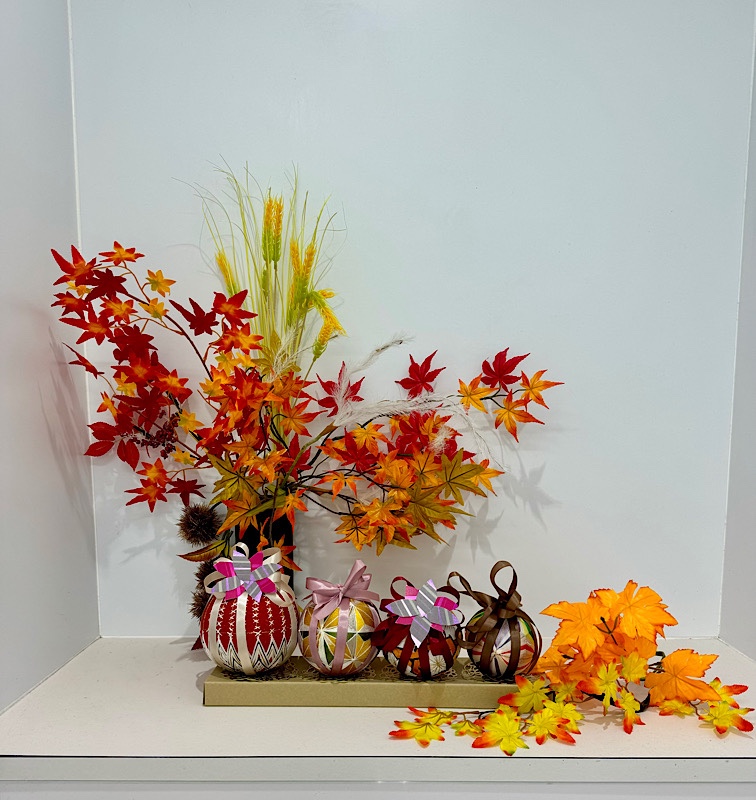
Next brewery for the day was the Fukumitsuya Saké Brewery. This places was founded in 1625 and they are a 14th generation family brewery. Super impressive history; though I do wonder at family businesses like this – how much pressure is there for someone to take on the family business? Whether they want to or not.

Traditionally saké has always been consumed fresh – it wasn’t aged or cellared and was believed not to ‘cellar well’. Hence the sugaidamas to they’ll the town that there was a fresh batch of saké ready for purchase. The Fukumisuya brewery was the first saké brewery in Japan to start cellaring and selling aged sakés. A practice they started back in the late 50s/early 60s after the 12th owner of the brewery spent some time in Europe and came home to start experimenting with aging saké in both room temperature and in cold cellars. Even then, they seem to only age the saké for about three years – or 1000 days (probably because it sounds neat for the marketing!).
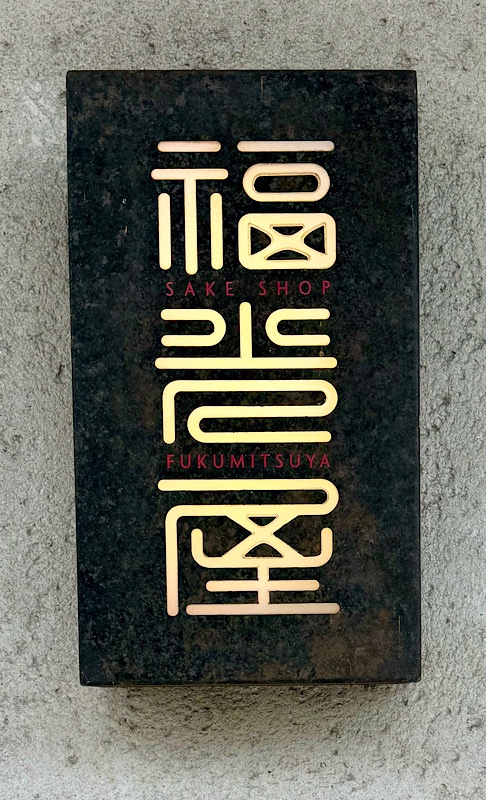
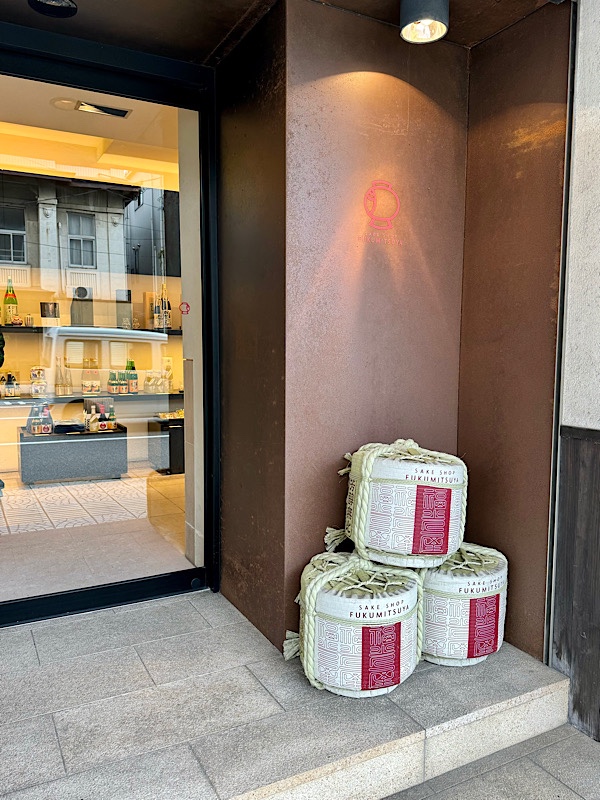 Here, I met a lovely woman who had been living in the US for a number of years and her English was exceptional. We had an in-depth discussion about the various types of saké, and she led me through some tastings. She gave me a pile of information on different varieties and practices that various different breweries were engaging in.
Here, I met a lovely woman who had been living in the US for a number of years and her English was exceptional. We had an in-depth discussion about the various types of saké, and she led me through some tastings. She gave me a pile of information on different varieties and practices that various different breweries were engaging in. 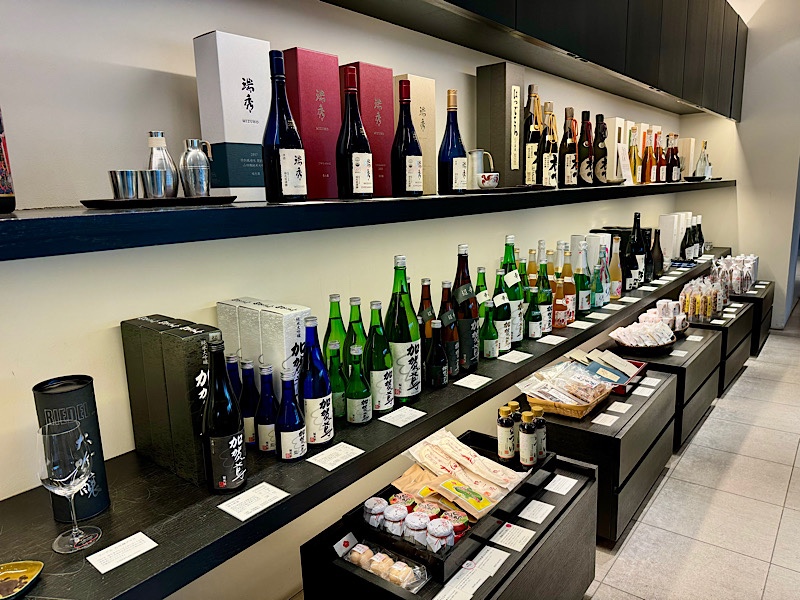 Turns out, that without even realising it – I have developed a taste for ‘purest saké’ (because of course I have… champagne tastes on a beer budget my entire life!). Meaning that the sakés I have found I enjoyed the most are the ones with the least amount of additives. Anything with ‘junmai’ on the label is pure saké, made only with rice, natural waters and koji (koji being a fermentation culture). Which totally explains (for me, at least) why I dislike some saké because it’s too sweet, (likely has sugar added), or to strong in it’s alcohol taste, (likely has grain alcohol added).
Turns out, that without even realising it – I have developed a taste for ‘purest saké’ (because of course I have… champagne tastes on a beer budget my entire life!). Meaning that the sakés I have found I enjoyed the most are the ones with the least amount of additives. Anything with ‘junmai’ on the label is pure saké, made only with rice, natural waters and koji (koji being a fermentation culture). Which totally explains (for me, at least) why I dislike some saké because it’s too sweet, (likely has sugar added), or to strong in it’s alcohol taste, (likely has grain alcohol added).
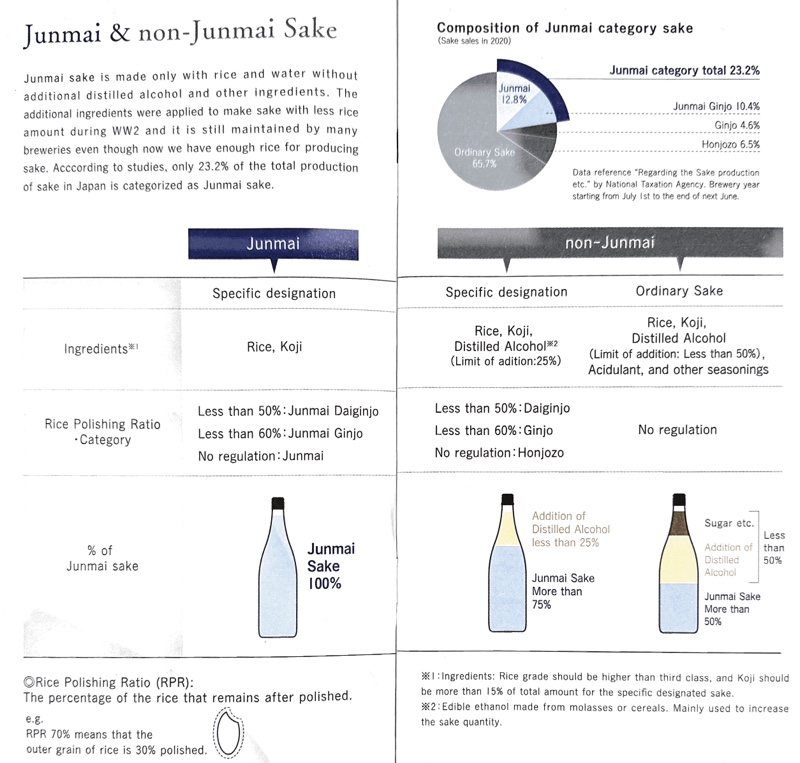
Their website has an excellent link to the saké brewing process.
After this we head off to find our machiya where we will be based for the next few days.
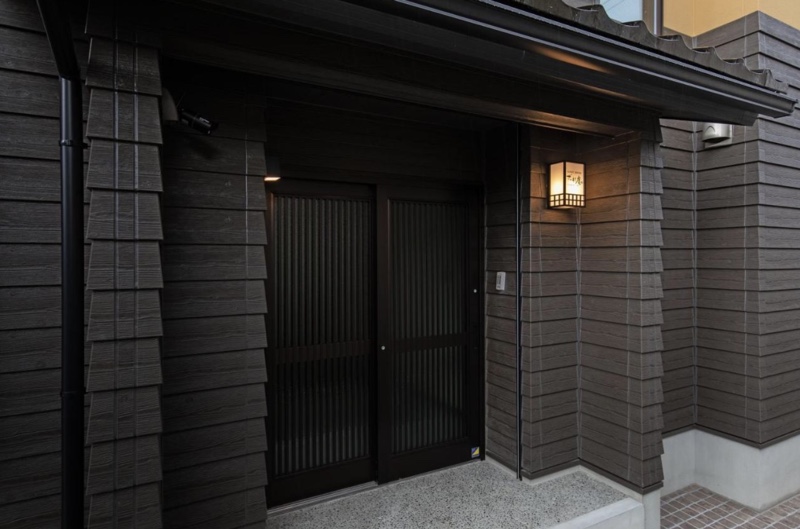


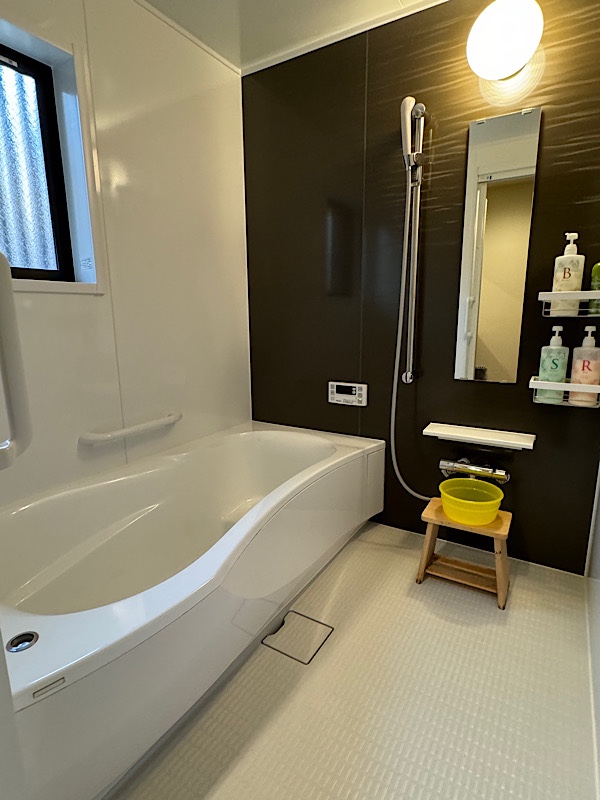 This mural is called a Fusama painting and it was apparently created by Kahoolawe Ueshima, who is a well known local arts who works in the ParalymArt collective – I have no idea what that is, but it appears to be a significant art community according to our host.
This mural is called a Fusama painting and it was apparently created by Kahoolawe Ueshima, who is a well known local arts who works in the ParalymArt collective – I have no idea what that is, but it appears to be a significant art community according to our host. 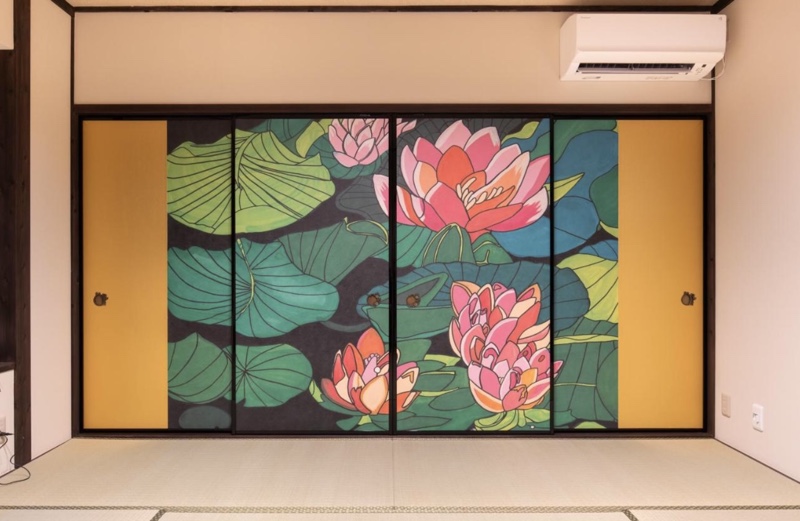
The view from upstairs down into the living space.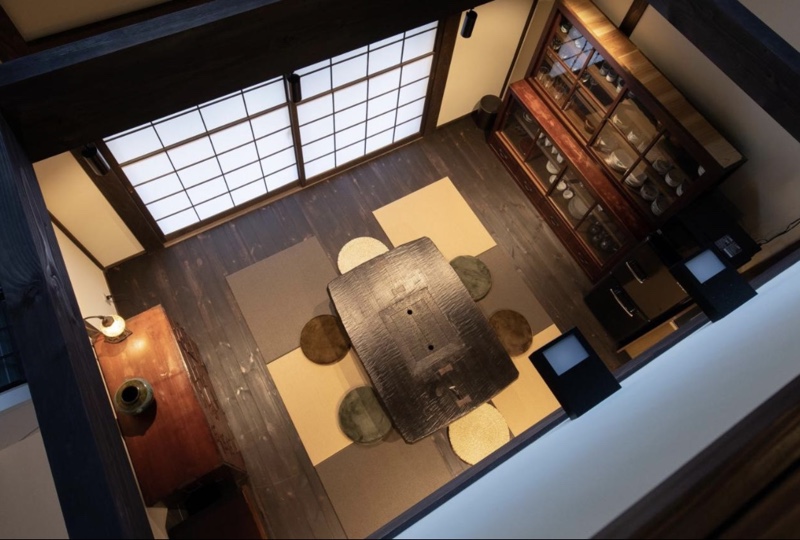
Lovely tatami bedroom – I love the smell of the tatami mats.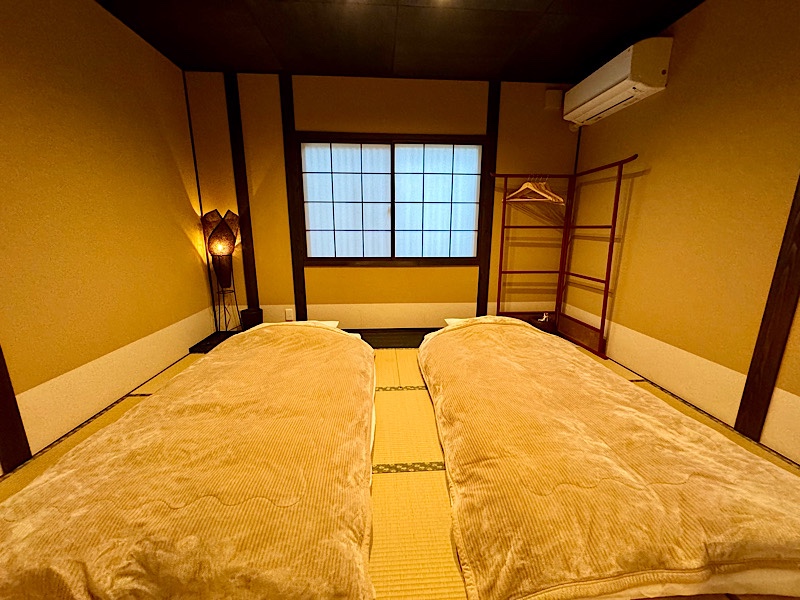 We have a cute, private little garden space; I love the rain chains and have often wondered if they would look out of place in suburban Brisbane. lol
We have a cute, private little garden space; I love the rain chains and have often wondered if they would look out of place in suburban Brisbane. lol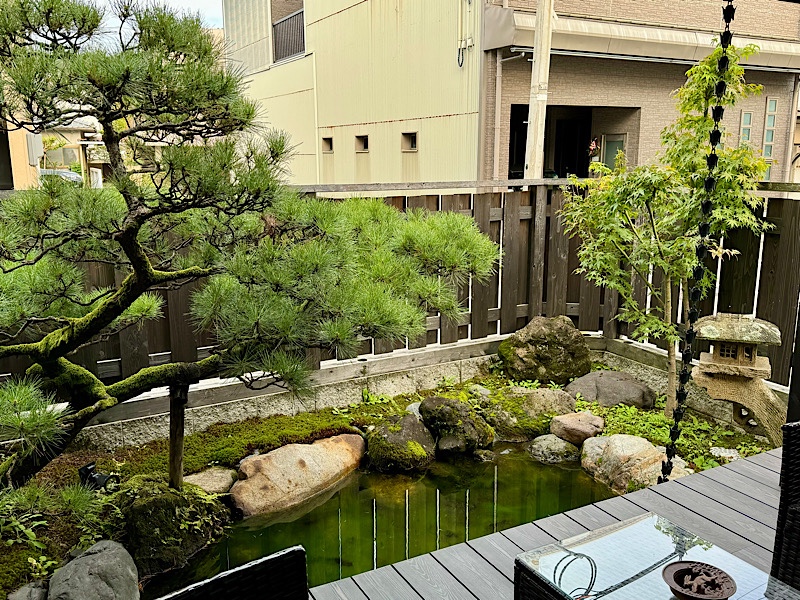
Keeping it old school… complete with emergency contact numbers list… it probably needs instructions for Gen Z on how to dial it. 😛 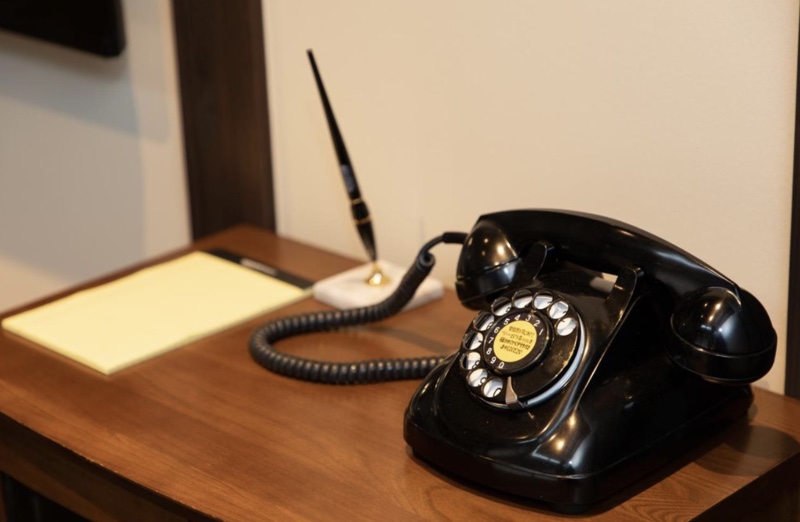 Now to sit down to do some serious work, which of course requires – saké!!! Kanpai.
Now to sit down to do some serious work, which of course requires – saké!!! Kanpai.